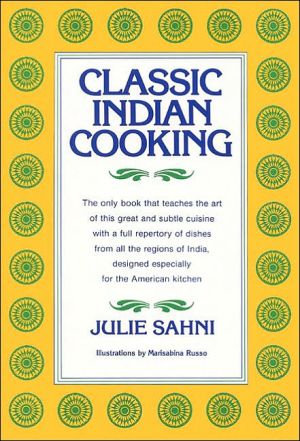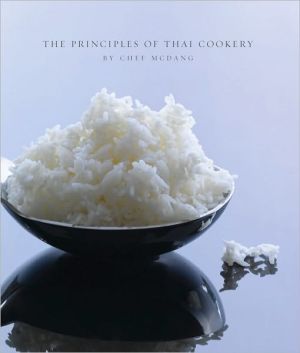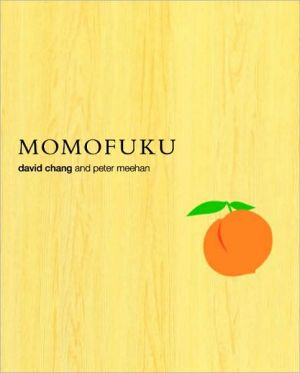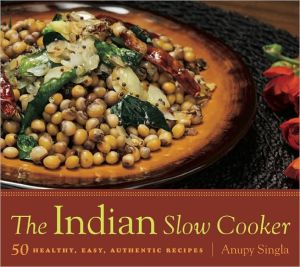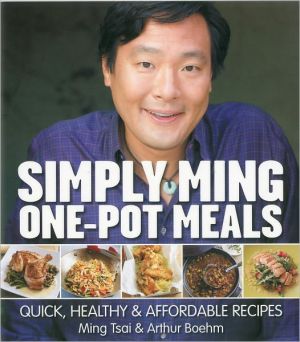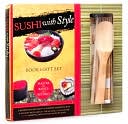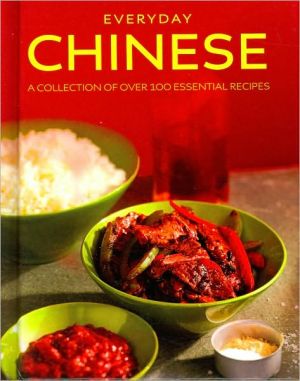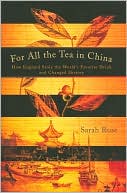Classic Indian Cooking
This extraordinary cookbook, Classic Indian Cooking, amounts to a complete course in Indian cuisine. Elucidated by over 100 line drawings, it systematically introduces the properties of all the basic spices and special ingredients of Indian food, then explains the techniques employed in using them, always with the help of comparisons to familiar Western methods.\ It is immediately obvious that Indian food is rich and varied, yet not difficult to prepare. The cooking principles are basic and...
Search in google:
This extraordinary cookbook, Classic Indian Cooking, amounts to a complete course in Indian cuisine. Elucidated by over 100 line drawings, it systematically introduces the properties of all the basic spices and special ingredients of Indian food, then explains the techniques employed in using them, always with the help of comparisons to familiar Western methods.It is immediately obvious that Indian food is rich and varied, yet not difficult to prepare. The cooking principles are basic and wellknown. The utensils needed are few and simple. As Julie Sahni says, "If you know how to fry, there are few tricks to Indian food." Every recipe has been especially designed for the American kitchen — practically all the ingredients can be found in any American supermarket and there are scores of time-saving shortcuts with the food processor and handy directions for ahead-of-time preparation.Following a lively and absorbing introduction to the history of India's classic Moghul cuisine, Julie guides the cook through the individual components that make up an Indian meal. She begins with delicious appetizers like Crab Malabar and Hyderabad lime soup; continues through main courses, both nonvegetarian and vegetarian (this book is a treasure trove for the non-meat eater); goes on to all the side dishes and traditional accompaniments, from spinach raita and lentils with garlic butter to saffron pilaf and whole wheat flaky bread; and ends with the glorious desserts, like Ras Malai, sweetmeats, and beverages. Clear, illustrated, step-by-step instructions accompany the cook through every stage, even for making the many wondrous Indian breads, both by hand and with the food processor. And at the end of each recipe are balanced serving suggestions for every kind of meal, Among the many special features are ideas for appropriate wines, a useful spice chart, a complete glossary (which might also come in handy when ordering in Indian restaurants), and a mailorder shopping guide that will make Indian spices accessible anywhere.Most important, Julie Sahni imparts the secrets to mastering the art of Indian cooking. Even the beginner will quickly learn to move within the classic tradition and improvise with sureness and ease.Julie Sahni has written a masterpiece of culinary instruction, as readable as it is usable, a joy to cook from, a fascination to read.
Mysore Spicy Lentil Broth\ (Mysore Rasam)\ Rasam, a Sanskrit word, literally translated means broth. Rasam, a highly seasoned lentil broth, is a Southern delicacy. It is either mixed with rice and eaten, or drunk in cups as a soup. It is the most popular soup in India today. There are innumerable variations, but this version from the State of Mysore is the finest by far. Rasam is traditionally made with lentils (toovar or arhar dal) to give the broth a thick, creamy, almost gelatinous texture. If you cannot get lentils, you may substitute the supermarket variety of yellow split peas. If you use a substitute, follow directions for cooking the different varieties of legumes (dal) on page 327.\ Tamarind is essential to the authentic Mysore Rasam flavor. But tomatoes are often substituted and produce an equally delicious soup, although not the classic one.\ For 8 persons\ \ \ 1 cup yellow lentils\ (Toovar dal)\ 1 teaspoon turmeric\ 2 1/2 cups chopped fresh ripe\ tomatoes (or substitute 2 cups\ chopped canned\ tomatoes)\ 2 teaspoons finely chopped\ garlic\ 1 one-inch ball tamarind pulp\ 1 tablespoon ground coriander\ 1 teaspoon ground curnin\ 1/4 teaspoon each red and black\ pepper\ 1 teaspoon molasses or sugar\ 1 tablespoon Kosher salt\ 2 tablespoons usli ghee (p. 50),\ or fight vegetable oil\ 3/4 teaspoon black mustard\ seeds\ 1/8 teaspoon ground asafetida\ 2 tablespoons finely chopped\ fresh coriander leaves (or\ substitute 1 ½ tablespoons\ dry coriander leaves)\ \ \ \ Pick over, clean, and wash lentils following instructions on page 327.\ Put the lentils in a deep 3-quart saucepan with the turmeric and 4 cups cold water. Bring to a boil over medium-high heat. Reduce heat and simmer at a gentle bubble, partially covered, until the lentils are tender (about 35 minutes), stirring occasionally to prevent sticking. Set aside.\ While lentils are cooking, puree tornatoes and garlic with 1/2 C Up cold water in an electric blender or food processor, and set aside.\ Put the tamarind pulp in a small bowl, add 1/4 cup boiling water, and let mixture soak for 15 minutes. Then mash the pulp with the back of a spoon, or use, your fingers. Pour the liquid through a strainer into a small bowl, being sure to squeeze as much juice out of the pulp as possible (discard the stringy fiber).\ Puree the lentils in an electric blender, food processor, or food mill, and return to the pan. Blend in 3 cups hot water with a wire whisk, and mix thoroughly. Let lentils rest, undisturbed, for 15 minutes. Pour the lentil broth that has accumulated at the top into another bowl. (There should be about 4 1/2cups of broth. If not, add enough water to bring it up to that quantity.) Transfer the thick lentil puree left at the bottom of the pan into a small bowl. (This can be saved and used for making lentil stews [Sambaar, p. 276], or enriched with Spice-Perfumed Butter [Tadka, p. 731 and served as 'a side dish.)\ Return the lentil broth to the pan, and add the tomato puree, tamarind juice, coriander, cumin, red and black pepper, molasses or sugar, and salt. Bring the broth to a boil over mediumhigh heat. Reduce heat to low and simmer, partially covered, for 15 minutes. Turn off heat. (The lentil broth may be made ahead up to this stage and set aside, covered, for up to 4 hours, refrigerated for up to 4 days, or frozen. Defrost and heat thoroughly before proceeding with the recipe.)\ Heat the ghee over high heat in a small frying pan. When it is very hot, carefully add the mustard seeds. Keep a pot lid or spatter screen handy, since the seeds may splatter and sputter when added. When the sputtering stops and the seeds turn gray (about 5 seconds), add the asafetida. Then immediately turn off the heat, and pour the spiced butter over the lentil broth. Stir to mix. Cover the pan, and let the broth rest briefly (about 5 minutes). When ready to serve, simmer until heated through. Check for salt, and stir in the coriander leaves. Serve piping hot.\ \ Note: This soup should definitely be classified as a clear soup or, even better, as an Indian consomme. Sometimes, however, a little lentil puree or tomato pulp escapes into the dear broth, and this is quite acceptable. The residue usually sinks to the bottom of the pan. So always stir the soup thoroughly before serving, to distribute the residue evenly. Because of its brothlike consistency, this soup is always served in a cup-not in a soup bowl-with a saucer, and a teaspoon to stir the soup frequently, and is meant to be sipped.\ This spicy tomato-rich lentil broth will liven up anyone's appetite. It is particularly soothing on cold winter days. To maintain a southern mood, follow this soup with other southern delicacies, such as Spicy Brussels Sprouts, Green Beans, and Lentil Stew (p. 276), or Goanese Hot and Pungent Curry (p. 199). Or if you wish to serve a simple light lunch, omit the main dish and serve an herb-fragrant pilaf, such as Mint Pilaf (p. 377) or Vegetable and Rice Casserole with Herbs (p. 379), accompanied by a cool yogurt salad, such as Tomato and Yogurt Salad (p. 345) or Okra and Yogurt Salad (p. 347)\ \ Lamb Pilaf\ (Mughalai Pullao)\ A pilaf made with lamb is one of the most festive and comforting of all dishes. Pilaf is generally made with the best of ingredients, the tenderest chunks of meat, the finest Basmati rice, the freshest spices, because there is no sauce or gravy to shield the inadequacies of any ingredient.\ This pilaf recipe, a specialty of my mother-in-law, is truly one of the finest I have encountered-another glowing example of the refined art of Moghul pilaf-making. To keep the meat from turning dark and losing its flavor, the fried onions are folded in at the end instead of being added at the beginning of the cooking. Also, the spices are tied in a bag so that only their essences are released into the pilaf.\ Even though this pilaf needs no accompaniment, an onion relish — especially Onion and Roasted Tomato Relish (p. 433) — is traditionally served.\ For 8-10 persons\ \ \ 3 pounds loin lamb chops\ (about 8-12 chops)\ 2 cups basmati rice\ 14 tablespoons light vegetable\ oil\ 4 cups finely chopped onions\ 2 tablespoons Kosher salt\ 3 tablespoons finely chopped\ garlic\ 4 tablespoons finely chopped fresh\ ginger root\ \ \ FOR THE SPICE BAG:\ \ \ 4 black and 6 green cardamom\ pods, or 14 green\ cardamom pods\ 1 stick cinnamon, 3 inches\ long, broken into 2-3\ pieces\ 1/2 teaspoon black peppercorns\ 10 whole cloves\ 1 1/2 teaspoons each cumin and\ coriander seeds\ 3 bay leaves, crumbled\ \ \ \ Trim every trace of fat off the chops. The meat should be completely lean if possible (after trimming, the meat with bones should weigh about 2 1/4 pounds).\ Place all the spices for the spice bag on a double layer of cheesecloth, about 6 inches square, and tie the comers of the cheesecloth to form a bag. Hit the bag lightly with a wooden mallet, rolling pin, or any heavy tool to crush the spices slightly, and set aside.\ Pick over, clean, wash, and soak rice, following instructions given under Preparing Basmati Rice for Cooking on page 356.\ Bring 3 quarts of water to a boil in a deep pot. Add the soaked rice, and stir immediately for 1/2 minute (this keeps the rice from settling), being careful not to break the fragile rice grains. Bring the water to a second boil (it will take about 3 minutes) and ,cook the rice for 2 minutes. Pour the entire contents of the pot into a large sieve held over the kitchen sink. Hold the sieve under the tap, and let cold water run through the rice and sieve at medium speed for 3-5 seconds. Shake sieve to drain the rice thoroughly. Return the rice to the pot, add a little oil (about 1 teaspoon), and mix gently but thoroughly to coat the rice grains evenly. Cover and set aside until needed.\ Heat 6 tablespoons of the oil in a large heavy-bottomed ovenproof casserole, and add onions. Over medium-high heat, fry the onions until they turn caramel brown (about 30 minutes), stirring constantly to prevent burning. (See directions for Brownfrying Onions, p. 71.) Put the fried onions, along with 2/3 cup warm water and 1 tablespoon salt, into the container of an electric blender or food processor, and blend until finely pureed. Set aside until needed.\ Add the remaining 8 tablespoons of oil to the casserole, and heat. Add garlic and ginger, and cook over medium heat until they turn light brown (about 5 minutes). Add lamb chops in one layer, and cook, turning frequently until the meat loses its pink color (about 4 minutes). The chops at this point will begin to give out their juices and to steam. Let the meat steam undisturbed, uncovered, until most of the moisture evaporates (about 5 minutes). Watch the chops carefully during this period, because as soon as the moisture evaporates, the browning begins almost instantly, and unless the meat is stirred immediately it will bum.\ Add 4 cups boiling water along with the remaining tablespoon of salt and the spice bag. Reduce heat and simmer, covered, for 45 minutes, or until the meat is cooked through. Increase heat to medium and continue cooking, uncovered, until most of the moisture is absorbed and the meat is melting tender (about 30 minutes).\ Preheat the oven to 300'F. Remove spice bag from the meat, squeeze hard to extract as much juice as possible, and discard. Add reserved onion puree, and cook for 2 minutes, stirring constantly to mix in the ingredients and flavors. (The meat, rice, and onion puree may all be prepared ahead and set aside, covered, for several hours, or refrigerated for up to 3 days. The meat and onions may be frozen, but not the rice. Defrost and bring to room temperature before proceeding with therecipe.)\ Using a flat spatula, fold the cooked rice into the meat mixture. Place aluminum foil on top, of the- casserole and cover tightly with the lid. Bake the pilaf in the middle level of the Oven for 30 minutes. Turn off the oven, and leave the casserole inside for an additional 10 minutes. The pilaf, left in the oven, will remain warm for an additional 30 minutes.\ \ Note: The classic way of making pilaf is with bone-in meat, as described above. If, however, you prefer a boneless meat pilaf, do not use boneless chops for much of the flavor of the pilaf comes from the bones. Instead, remove the bones carefully when you remove the spice bag, or bone all the chops before cooking and make a stock (about 4 cups) by simmering the bones in water for 2 hours. Use this stock in place of the water for cooking the meat.\ Note: A freshly made and assembled pilaf will keep in the refrigerator for up to 5 days. In fact, the flavor mellows and improves with each day of keeping. To reheat, place the casserole, tightly covered with foil and lid, in the middle level of a preheated 300'F oven for 20-25 minutes.\ This mellow and beautifully flavored pilaf requires no special side dishes or staple. For a light meal, serve it with the tomato relish and a glass of chilled rose. If you want to expand the meal, serve any stir-fried vegetable or dal. Good choices are Stir-fried Okra (p. 309), Cauliflower and Scallions with Black Mustard Seeds (p. 301), Buttered Black Beans (p. 337), or Lucknow Sour Lentils (p. 335). For a subtle contrast in flavor, start off with Mulligatawny Soup (p. 143).\ Classic Indian Cooking. Copyright © by Julie Sahni. Reprinted by permission of HarperCollins Publishers, Inc. All rights reserved. Available now wherever books are sold.
